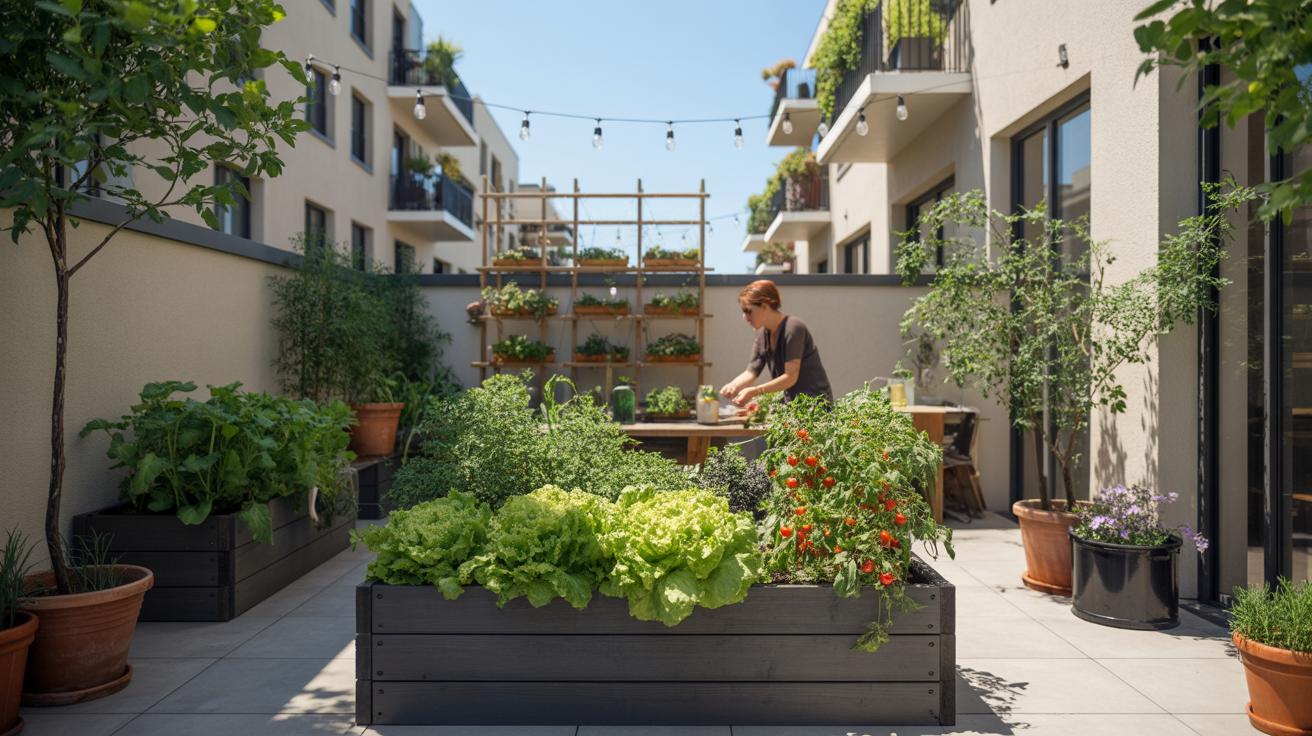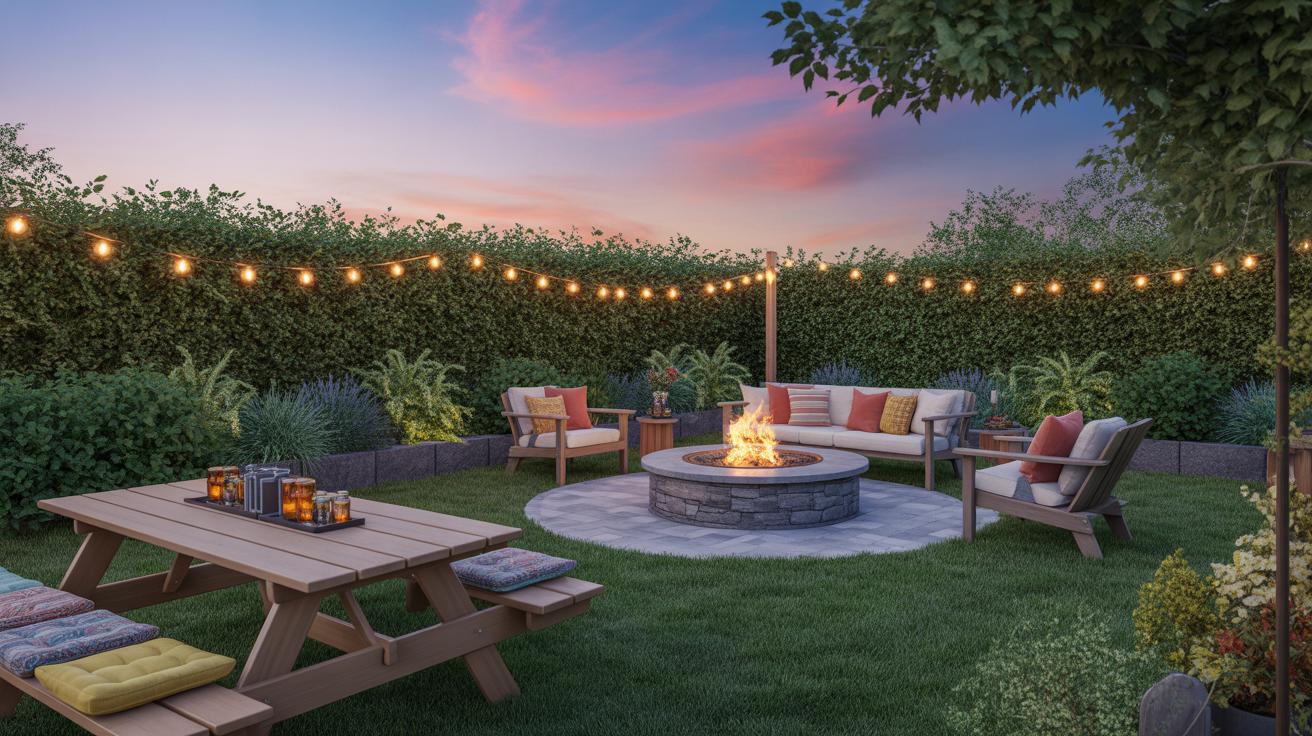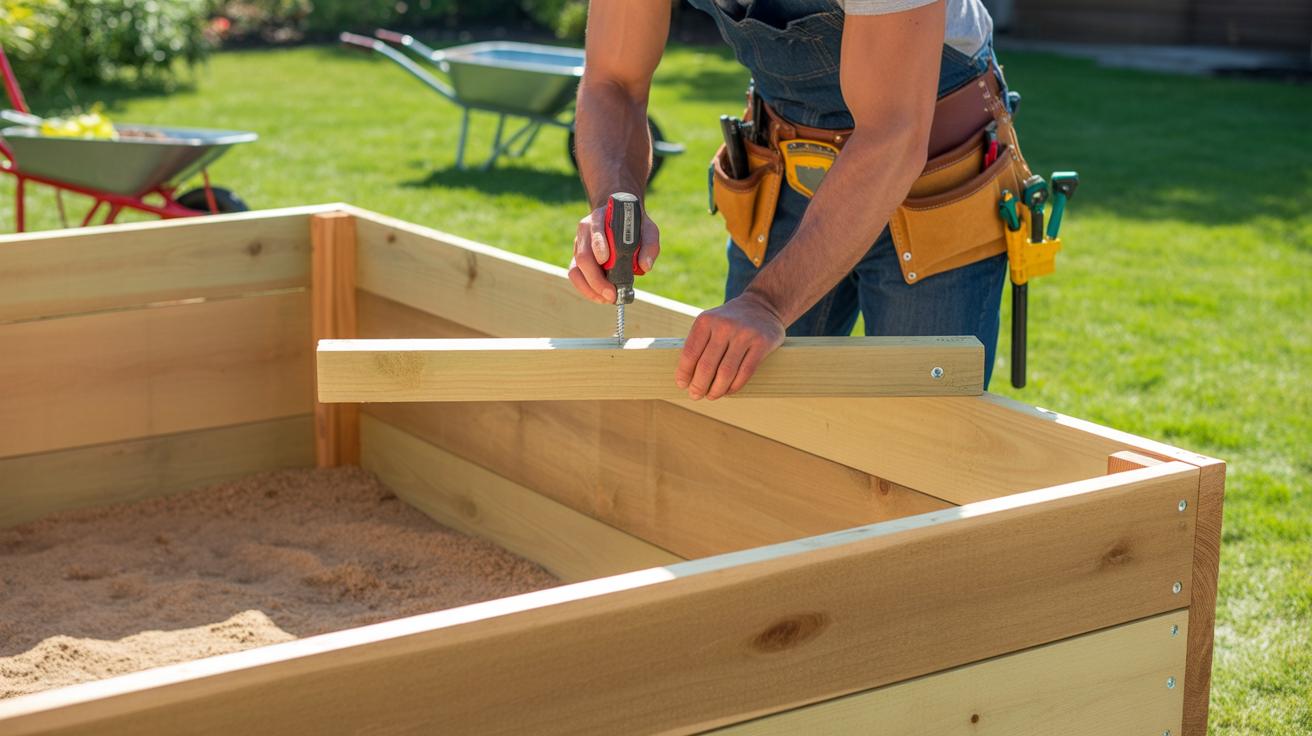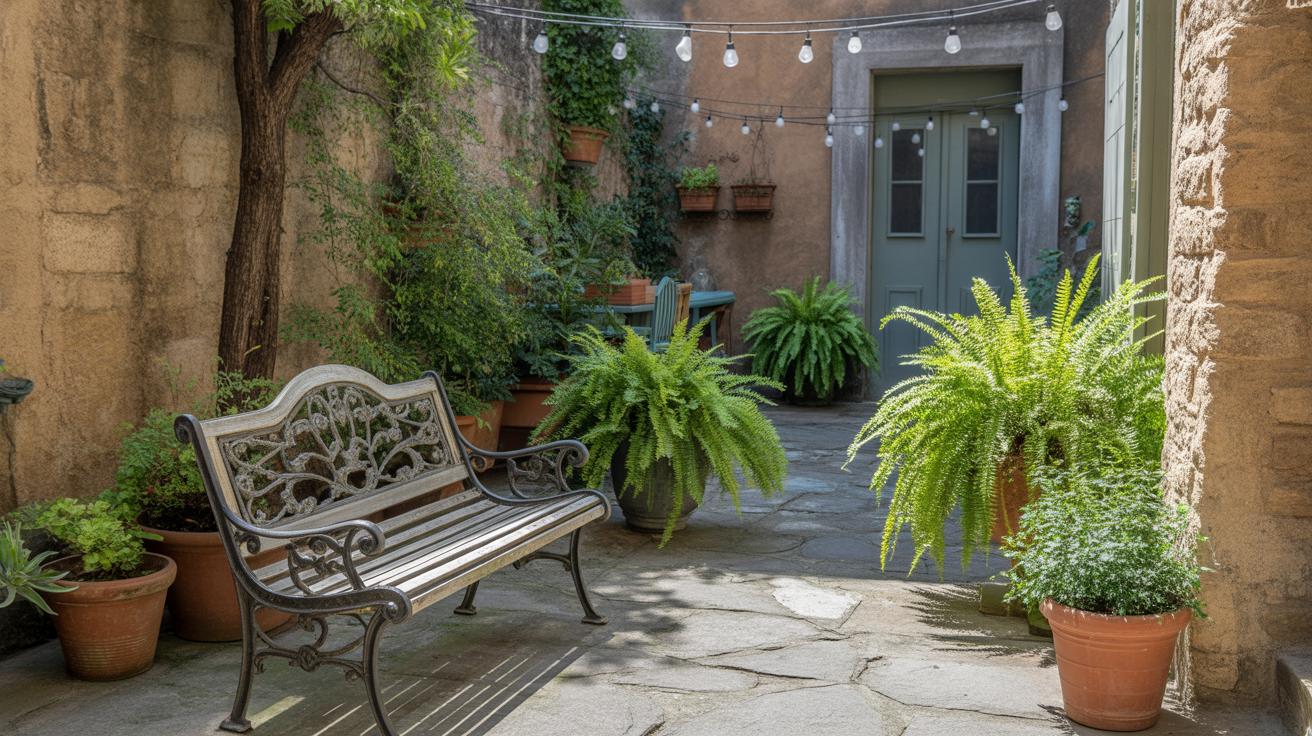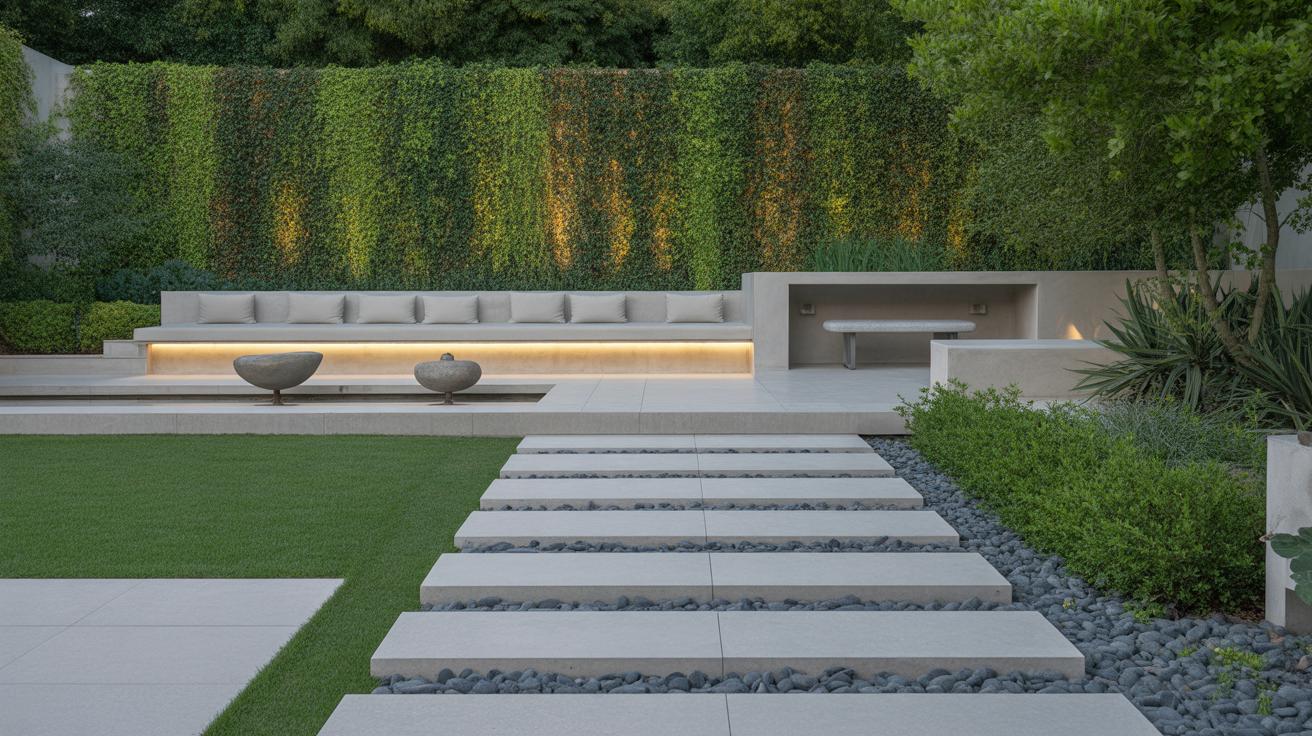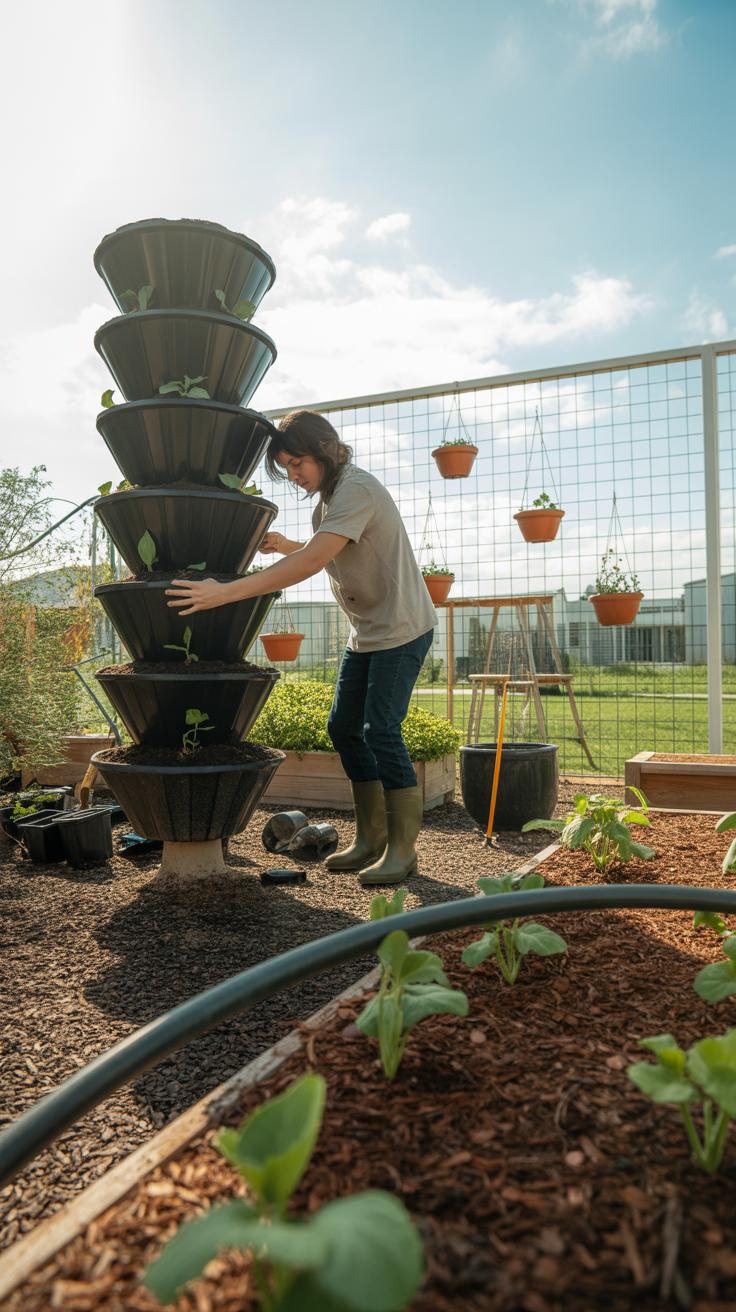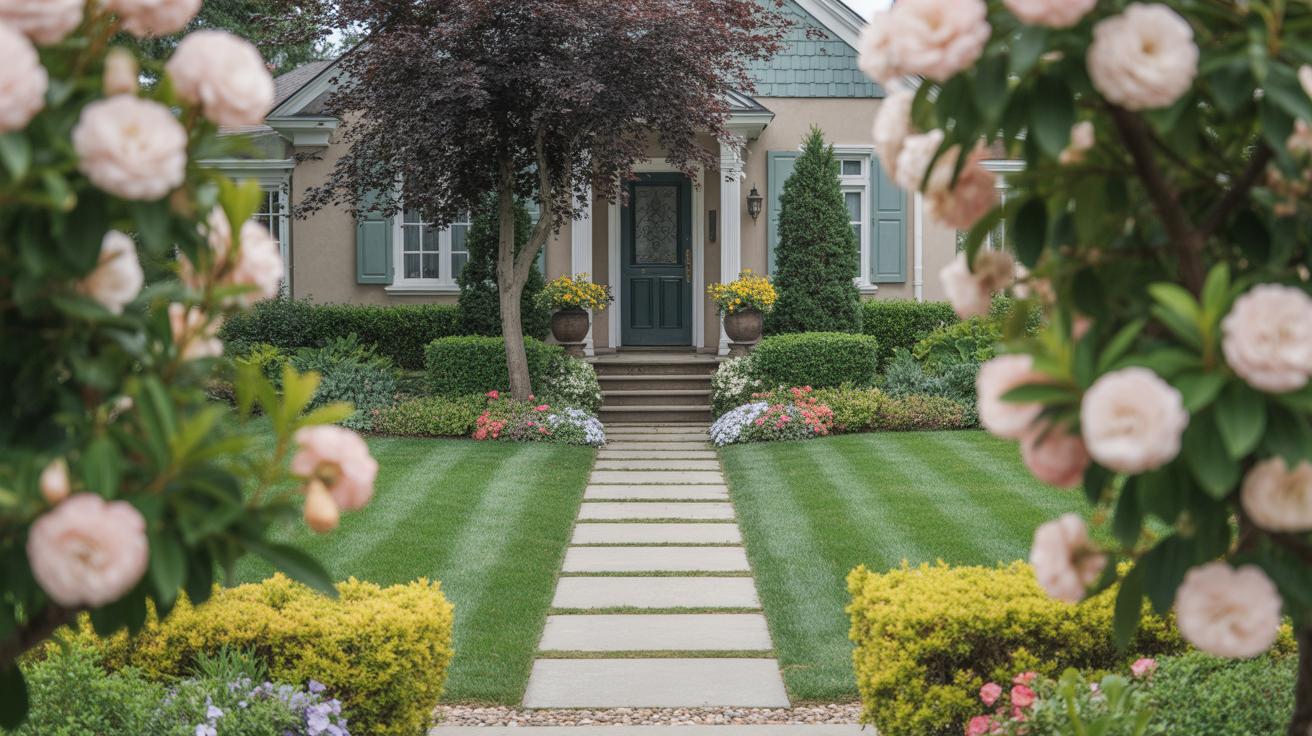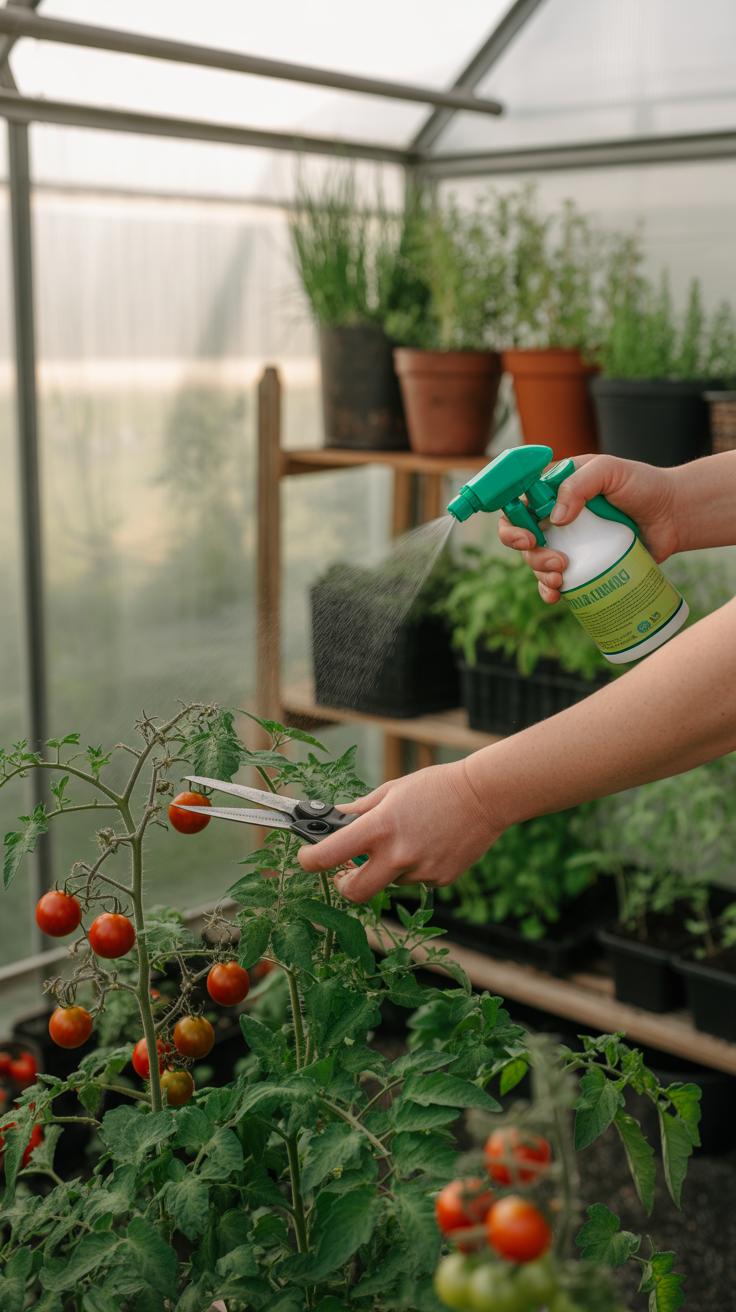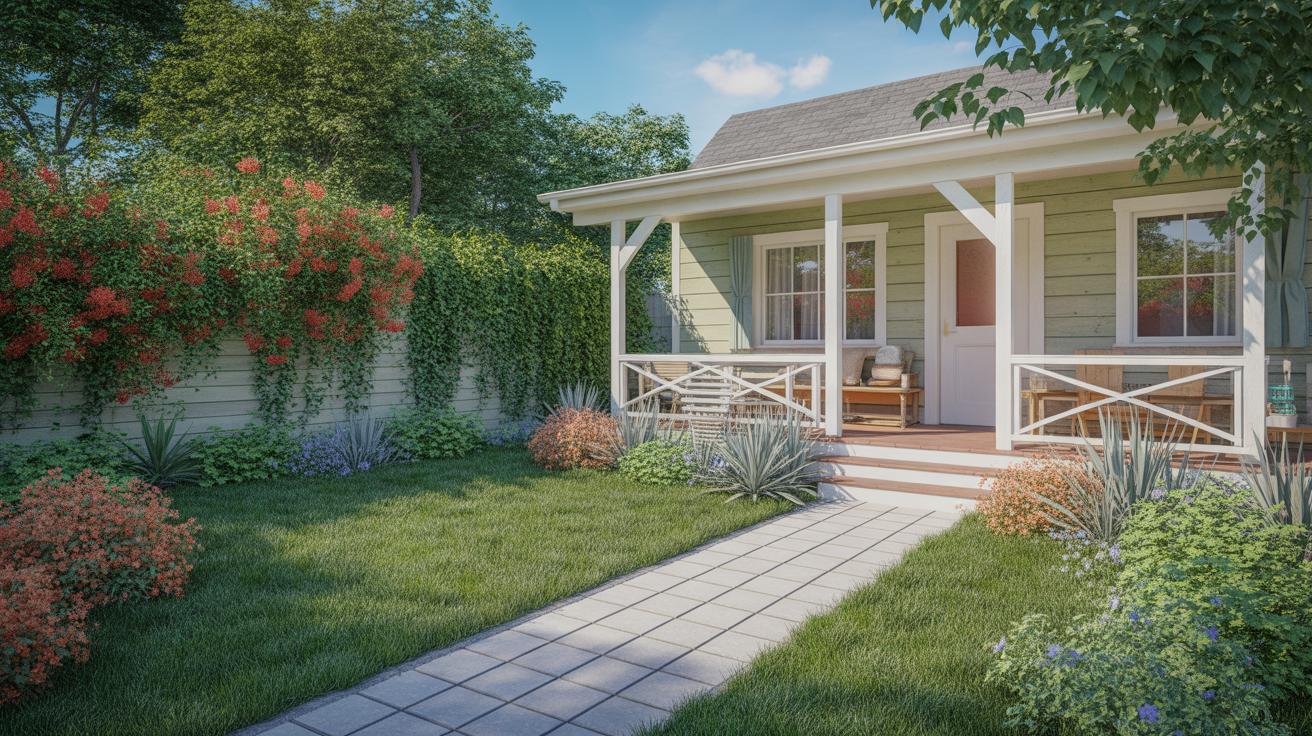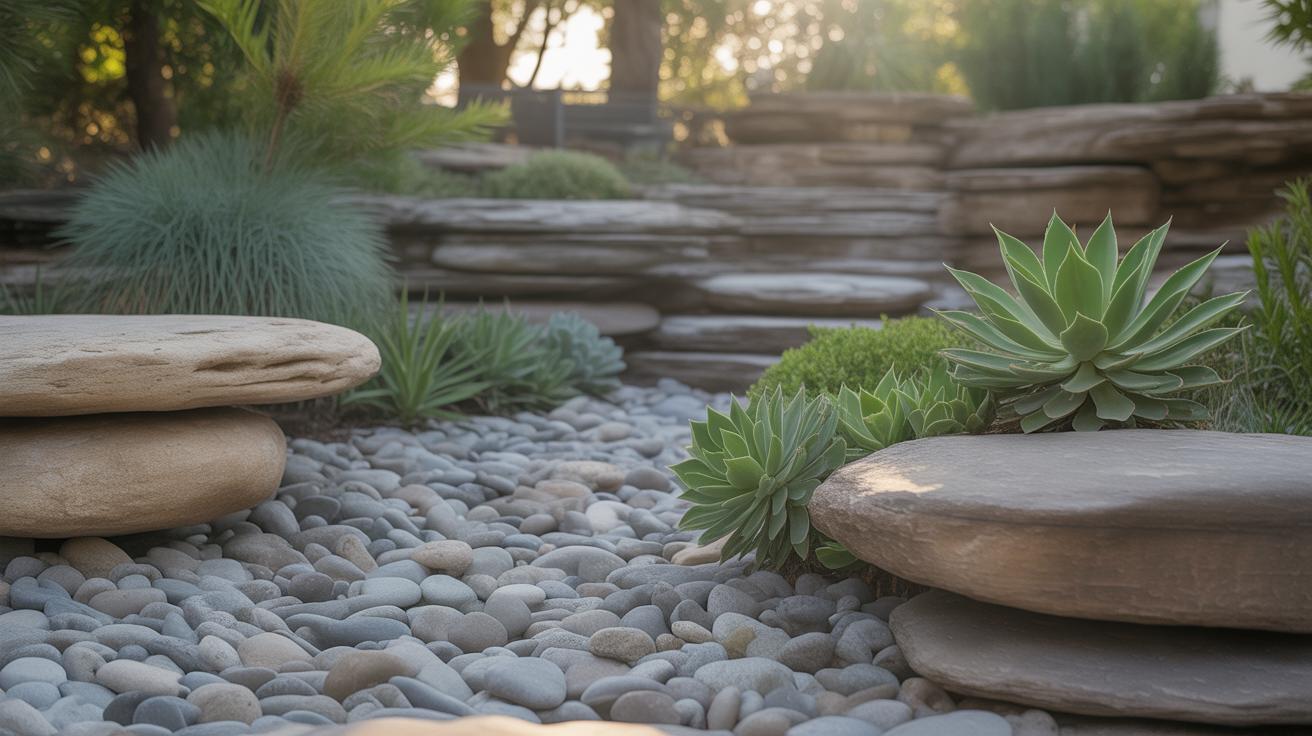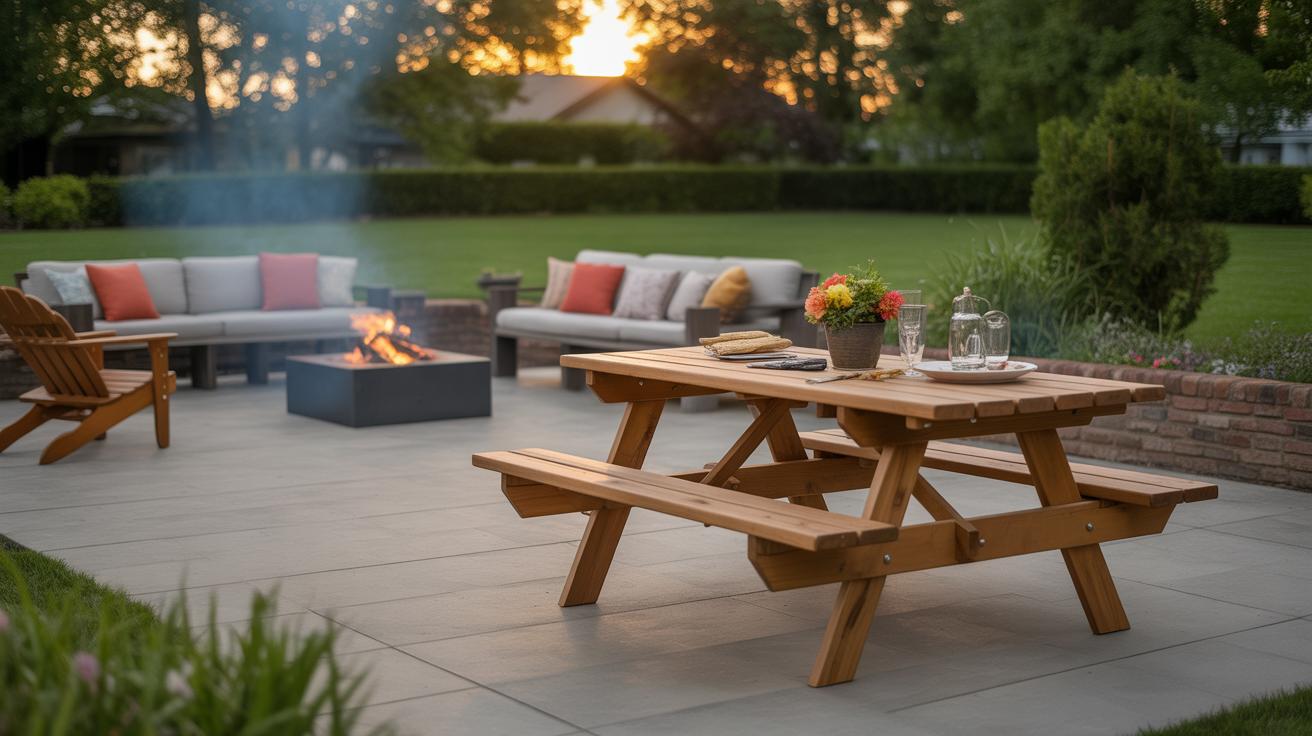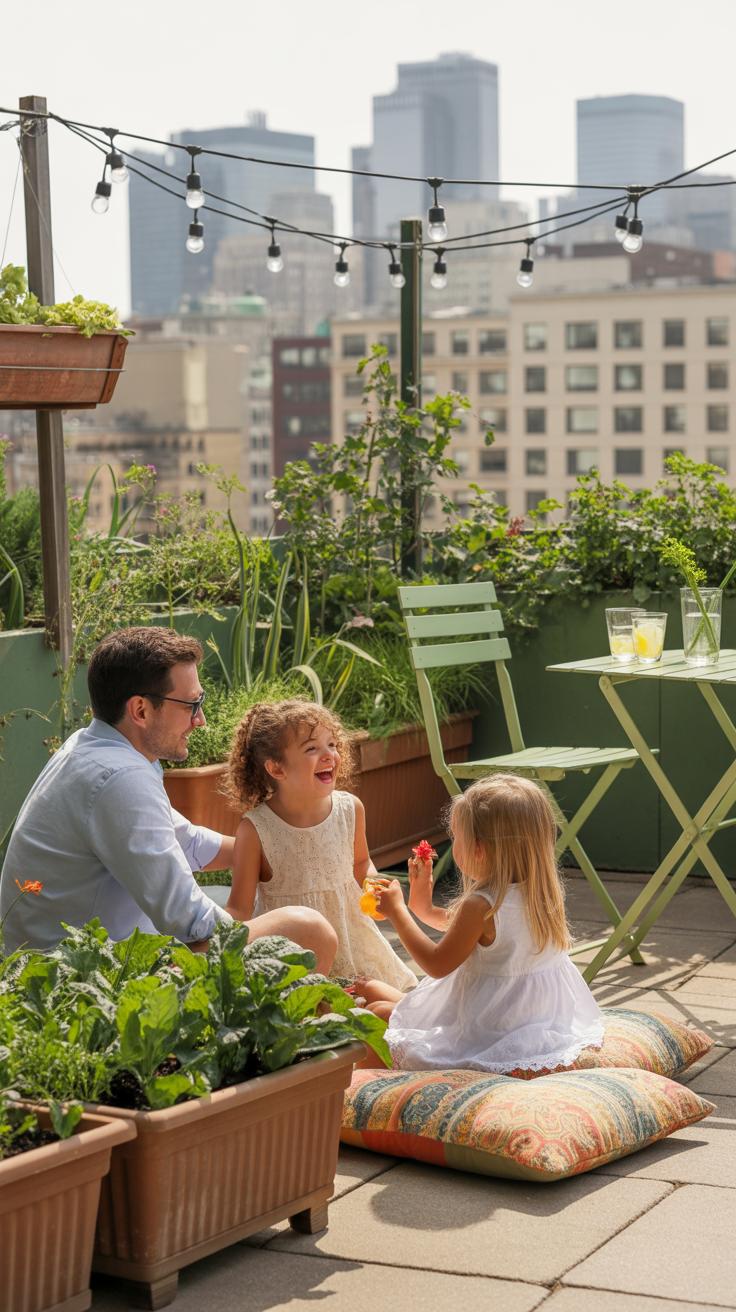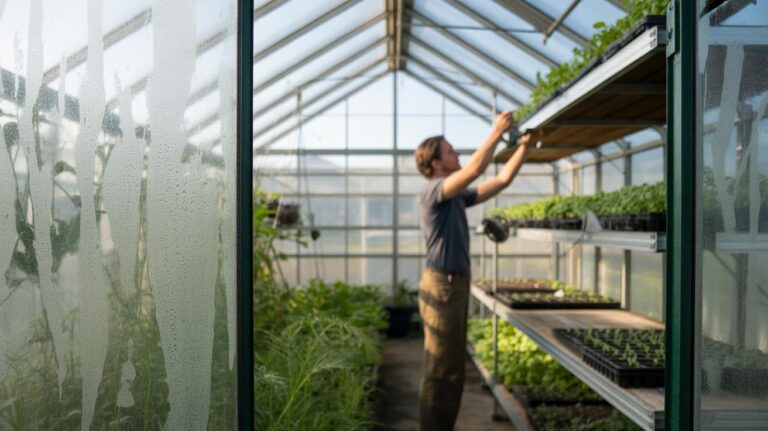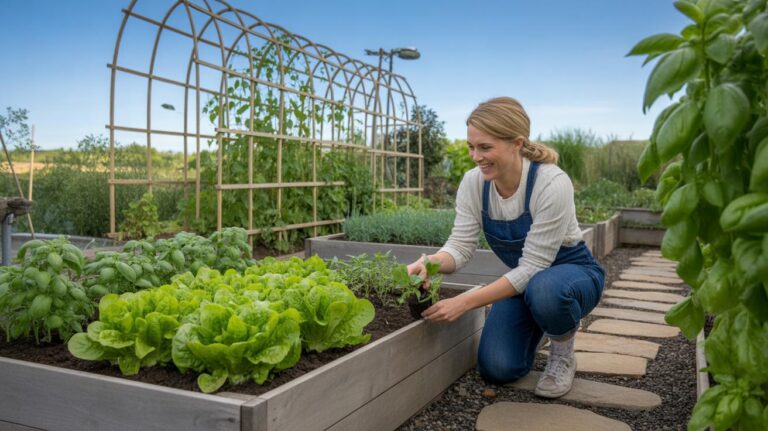Introduction
Urban backyard vegetable gardens bring the joy of fresh produce right to your doorstep. Even with limited space, you can create a thriving garden that grows your favorite vegetables. Small spaces can be transformed into productive vegetable gardens with careful planning and the right tools.
This article explores how you can start your own urban backyard vegetable garden. You’ll learn to plan your garden layout, select suitable plants, prepare your soil, and care for your garden effectively. Discover practical tips for making the most out of your small space and enjoy the benefits of homegrown food.
Planning Your Urban Vegetable Garden
When you’re working with a small backyard, planning your garden layout becomes a bit like solving a puzzle. You want to squeeze in as much as you can without crowding plants or making it hard to reach them. Measuring your available space is the best place to start. No guessing here—know exactly what you have, even if it’s just a narrow strip or tiny plot.
Sunlight plays a huge role too. Most vegetables need at least six hours of sunlight, but in urban settings, shadows from buildings or trees can change during the day. Watch how the light moves and think about spots with the longest direct sun exposure. Maybe the sunny corner near the fence is perfect for your tomatoes, while leafy greens do fine in a bit more shade.
Design choices—raised beds, containers, vertical supports—matter in tight spaces. Vertical growing can save ground space, and containers offer flexibility if you want to rearrange. Don’t overlook pathways or small gaps; you’ll want easy access for watering and harvesting without stepping on plants.
It can get a bit tricky, planning all this out without overwhelming yourself. Sometimes sketching the layout helps, other times just trial and error in your own backyard. What vegetables really deserve the prime spots? How will you rotate crops next season in such limited space? These questions shape your garden’s design and how much you’ll actually get from it.
Your Urban Vegetable Garden
When you start planning your garden, sunlight should be your top priority. Most vegetables need at least six hours of direct sun daily. It’s tempting to plant where it’s easy to reach, but if that spot’s shady most of the day, your plants might struggle. Take some time, maybe a few hours at different times of the day, to watch how sunlight moves across your backyard.
Next, get a clear measurement of your available space. Use a tape measure, and jot down dimensions carefully. It doesn’t have to be fancy—a simple sketch on paper can work just fine. Mark any permanent features like trees, fences, or patios. These landmarks help you figure out where plants can go without bumping into obstacles.
Your garden design should reflect the space and sunlight you’ve observed. If you only have a small corner with good sun, focusing your vegetables there makes sense. Raised beds or vertical planters can help stretch limited space. Arranging taller plants where they won’t shade smaller ones can also make a big difference. Planning this thoughtfully will save you some frustration later when things start growing.
Choosing The Best Location For Your Garden
Finding that perfect spot in your backyard can take a bit of trial and error. The best location generally is the sunniest, most accessible area. Think about where you can easily water and tend to your plants—if it’s too far or awkward, you may lose motivation.
Look for somewhere with good drainage too. A low spot that collects water after rain might not be ideal. Try to avoid areas under large trees where roots compete for nutrients or dense shade limits growth. Sometimes the sunniest spot is near a south-facing wall or fence—these can even provide some extra warmth.
Measuring And Mapping Your Backyard Space
Once you pick your location, measure your space in feet or meters. Write down length and width, then add notes about any non-plantable areas (like walkways or patios). With this info, you can sketch a simple map—boxes or circles showing the size and position of beds, paths, or containers.
This map helps you visualize how much you can fit in and where. It also lets you arrange plants by height or watering needs before planting anything. Keeping this plan handy as you start gardening helps you stay organized and adjust if needed.
Selecting Vegetables For Small Urban Gardens
Vegetables That Thrive In Small Spaces
Not all vegetables are suited for small gardens, but many do surprisingly well in containers or compact beds. Leafy greens like spinach, lettuce, and kale grow quickly and don’t take up much room. You can harvest these repeatedly, which is a nice bonus if you want a steady supply.
Root vegetables such as radishes and baby carrots fit in tight spots and mature fast. They don’t demand deep soil either, so shallow containers work fine. Peas and bush beans also adapt well; they’re compact but yield a good harvest, plus they help add nitrogen to the soil.
Tomatoes and peppers might seem too large, but dwarf or bush varieties do really well in small spaces, especially in pots. Cherry tomatoes or patio peppers can surprise you with their yield. Even herbs like basil, cilantro, and chives thrive here, making your garden feel fuller with very little footprint.
Planning Your Planting Calendar
Timing is a bit tricky in small gardens because you want to avoid empty soil whenever possible—wasting space feels worse when it’s tight. Fast growers like radishes can fill gaps left by longer-season crops.
Generally, cool-season vegetables such as lettuce or spinach start early spring or late summer. Warm-season crops like tomatoes or peppers wait until after frost. Staggering plantings helps you keep something fresh all year, though minor overlaps sometimes cause slight frustration—like waiting impatiently for your tomatoes while the last salad greens take their time.
Don’t hesitate to experiment with what works in your microclimate. You’ll learn when to sow and harvest with a bit of trial and error. Calendars help, sure, but your local weather and garden quirks might mean adjusting on the fly.
Preparing Soil For Healthy Vegetables
Getting your soil ready can feel like a chore, but it really shapes how well your vegetables grow. In small urban gardens, soil quality often varies a lot. Maybe it’s been compacted or mixed with construction debris, so testing the soil first helps you understand what you’re dealing with.
Testing And Improving Urban Garden Soil
Basic soil tests usually check for pH, nutrient levels like nitrogen, phosphorus, and potassium, and texture. You can find simple test kits at garden centers—or send a sample to a local extension service for more detailed analysis.
If your soil is too acidic or alkaline, adding lime or sulfur can help balance it. Nutrient defects can be corrected with organic fertilizers or natural amendments like bone meal or seaweed extracts. These options tend to release nutrients slowly, which might suit your garden better than synthetic fertilizers.
Using Compost And Organic Materials
Compost is almost like magic when it comes to improving soil. It loosens heavy dirt and boosts nutrient content without overwhelming the soil ecosystem. If you haven’t made compost before, starting with kitchen scraps and yard waste lets you recycle materials and save money. Compost piles need occasional turning and moisture, so be prepared for some effort there.
Buying compost is also fine, especially if time or space is tight. Just make sure it’s well-aged and free of contaminants. Adding a few inches of compost to your planting area can greatly improve texture and fertility, making your veggies happier and possibly more resilient.
Planting Techniques For Small Spaces
Raised Beds And Container Gardening
Raised beds and containers can really change the way you approach an urban vegetable garden. They give you more control over soil quality—something that’s often a challenge in city yards where soil might be compacted or contaminated. With raised beds, you can fill them with a tailored mix of soil and compost, creating a better environment for your plants to thrive. Plus, they’re easier to manage for watering and weeding.
Containers offer similar benefits but come with flexibility. You can bring them indoors during colder months or rearrange them to catch more sunlight. It’s surprising how much you can grow in just a few pots if you pick the right vegetables and soil. You do have to watch watering closely, though. Containers dry out faster, so regular attention is key.
Using Vertical And Companion Planting
Vertical gardening is a handy way to save ground space. Using trellises, cages, or even strings, you can grow crops like beans, peas, or cucumbers upwards instead of outwards. It feels like you’re stacking layers of productivity, which is kind of satisfying. Plus, plants grown vertically often get better airflow, which can reduce some pest issues.
Companion planting is a bit more subtle but has a lot of potential benefits. Pairing certain plants together—like tomatoes with basil, for example—not only can improve growth but might deter pests naturally. Sometimes, the results can be surprising, even if it’s not always consistent. Experiment a bit; you might find combinations that work really well in your specific garden.
Maintaining Your Urban Vegetable Garden
Watering Practices For Healthy Plants
Watering your garden seems straightforward, but it isn’t always as simple as just pouring water on the soil. Timing matters a lot. Early mornings are usually best; the soil absorbs water before the heat of the day causes quick evaporation. Evening watering can work too, but it risks leaving foliage damp overnight, which might encourage disease.
When you water, aim at the base of the plants rather than spraying leaves. This helps roots get the moisture they need without encouraging fungal growth. Also, check your soil before watering—sometimes the soil is still damp a couple of inches down, meaning the recent watering was enough.
Try to water deeply but less often. Shallow, frequent watering can make plants develop weak roots. For instance, tomatoes and peppers appreciate a slow soak that reaches their roots rather than just a quick splash. Mulching around plants also reduces drying out and can cut down on how often you need to water.
Controlling Pests And Diseases Safely
Pests are part of any garden story, but letting them get out of control isn’t necessary. Instead of reaching for harsh chemicals, there are simpler, safer ways to manage them. For example, introducing beneficial insects like ladybugs can keep aphid populations down quietly.
Hand-picking larger pests like slugs or beetles off leaves works surprisingly well, especially in small spaces. Another approach is using homemade sprays—soapy water, garlic, or neem oil mix—that deter pests without damaging your veggies or risking toxicity.
Disease management can feel tricky. Checking plants regularly for spots, discoloration, or wilting allows you to act early. Removing affected leaves and ensuring good air circulation between plants reduces fungal problems. Sometimes, simply spacing your veggies a bit more helps more than you might think.
Would you try combining these methods? Sometimes you have to experiment to find what fits best with your garden’s unique conditions. Just remember, patience goes a long way in keeping your urban garden thriving.
Harvesting And Using Your Garden Vegetables
When And How To Harvest Vegetables
Knowing when to pick your vegetables can be tricky. Most veggies show subtle signs that they’re ready: like tomatoes changing from green to red, or cucumbers reaching a firm size but before the seeds enlarge too much. You might notice beans snap easily or lettuce leaves feel crisp and full. Timing matters because waiting too long often means tougher, less flavorful produce.
Gently is the key word when harvesting. Use scissors or garden shears rather than pulling, to avoid damaging the plant. Sometimes a light twist works, like with peppers or zucchini. If you’re unsure, try harvesting a small piece first and check if the flavor or texture feels right. It’s a little bit of trial and error, honestly.
Storing And Cooking Your Homegrown Vegetables
Freshness declines fast, even if you refrigerate things. Root vegetables like carrots and beets do better in cool, damp places outside the fridge, while leafy greens want humidity but not sogginess. A simple paper towel in your storage bag can soak up excess moisture and extend crispness.
Cooking often brings out the best in garden veggies, but overcooking can erase that fresh flavor you’ve grown. Steaming or quick sautéing works well. Sometimes just a sprinkle of salt and a drizzle of olive oil highlights the taste perfectly. Ever tried raw garden peas straight from the pod? They might surprise you.
Using what you pick quickly not only tastes better but keeps nutrients intact. If you can’t eat everything right away, preserving through freezing or pickling might be worth trying—though, again, that’s a bit of a balance with texture and flavor.
Expanding And Enjoying Your Garden
If you’re looking to stretch your garden beyond just vegetables, try adding some flowers and herbs. These won’t take up much space, but they can really change the feel—and function—of your little green corner. Flowers like marigolds or nasturtiums tend to attract pollinators, which can help boost your vegetable yields. Plus, herbs such as basil, thyme, or mint don’t just add fresh flavors to your meals; they’re easy to grow alongside your veggies and can fill in those awkward gaps in your beds.
Sometimes, planting flowers also helps keep pests away without the need for sprays, though that might depend on your specific situation. I once found that a few lavender plants near my tomatoes made a big difference in how much I saw aphids around. Not always, but it gave me hope that these little additions matter.
Besides expanding what you grow, consider turning gardening into a shared experience. Maybe offer some of your homegrown carrots or herbs to neighbors. Sharing food can open up conversations. You might even learn new tips or exchange seeds. There’s something satisfying about turning a hobby into a community activity, though I sometimes wonder if it’s always worth the extra effort—still, most times, it is. Gardening becomes less about just growing plants and more about growing connections.
Conclusions
Creating an urban backyard vegetable garden in small spaces is rewarding and achievable. By choosing the right plants and managing your garden smartly, you can enjoy fresh vegetables year-round. Planning and effort pay off with great-tasting and healthy harvests right from your backyard.
Gardening in urban areas offers a chance to connect with nature and develop a useful hobby. With the knowledge shared here, you can start your urban garden confidently. Watch your garden grow and enjoy the satisfaction of homegrown vegetables with every meal.

